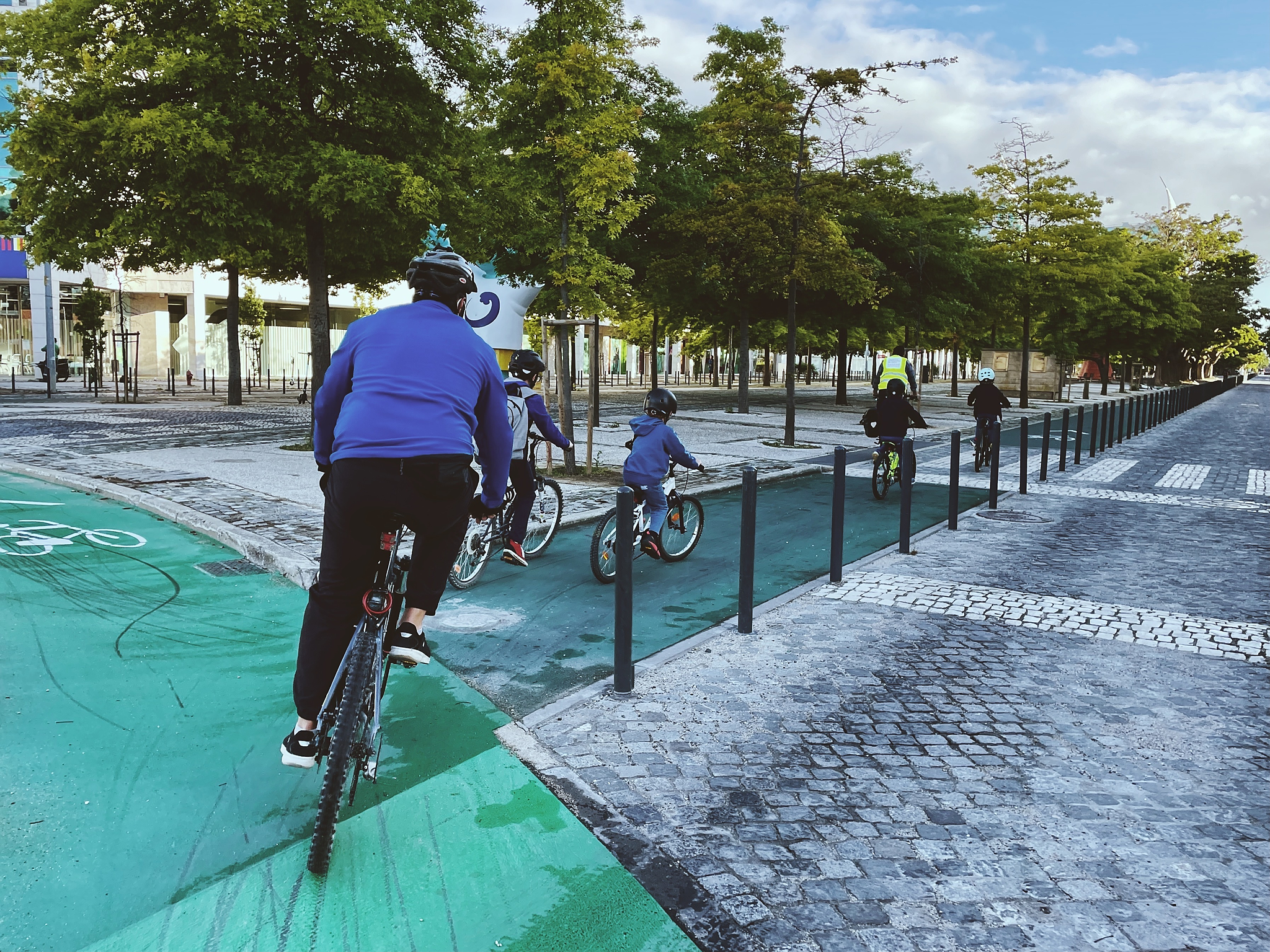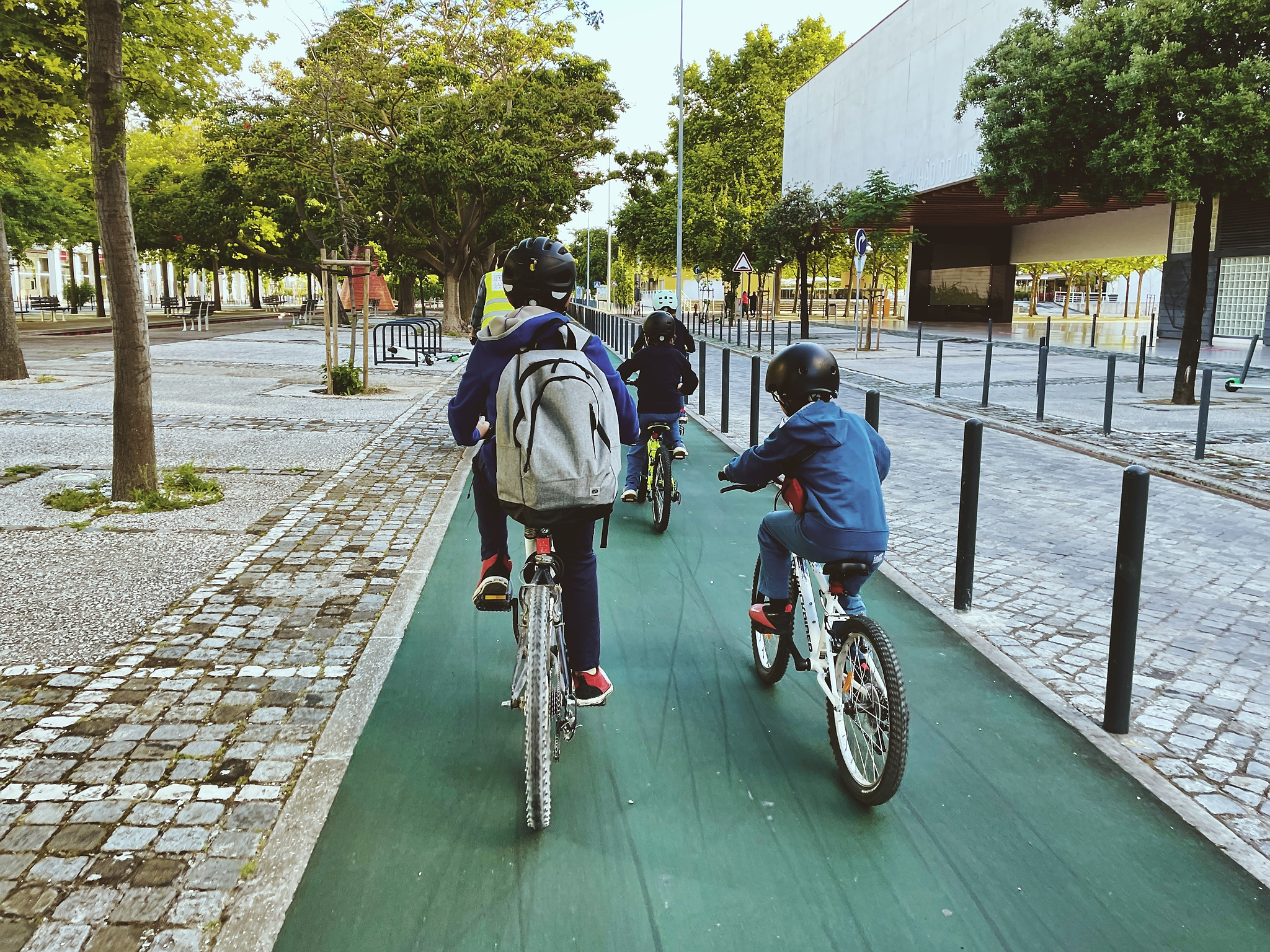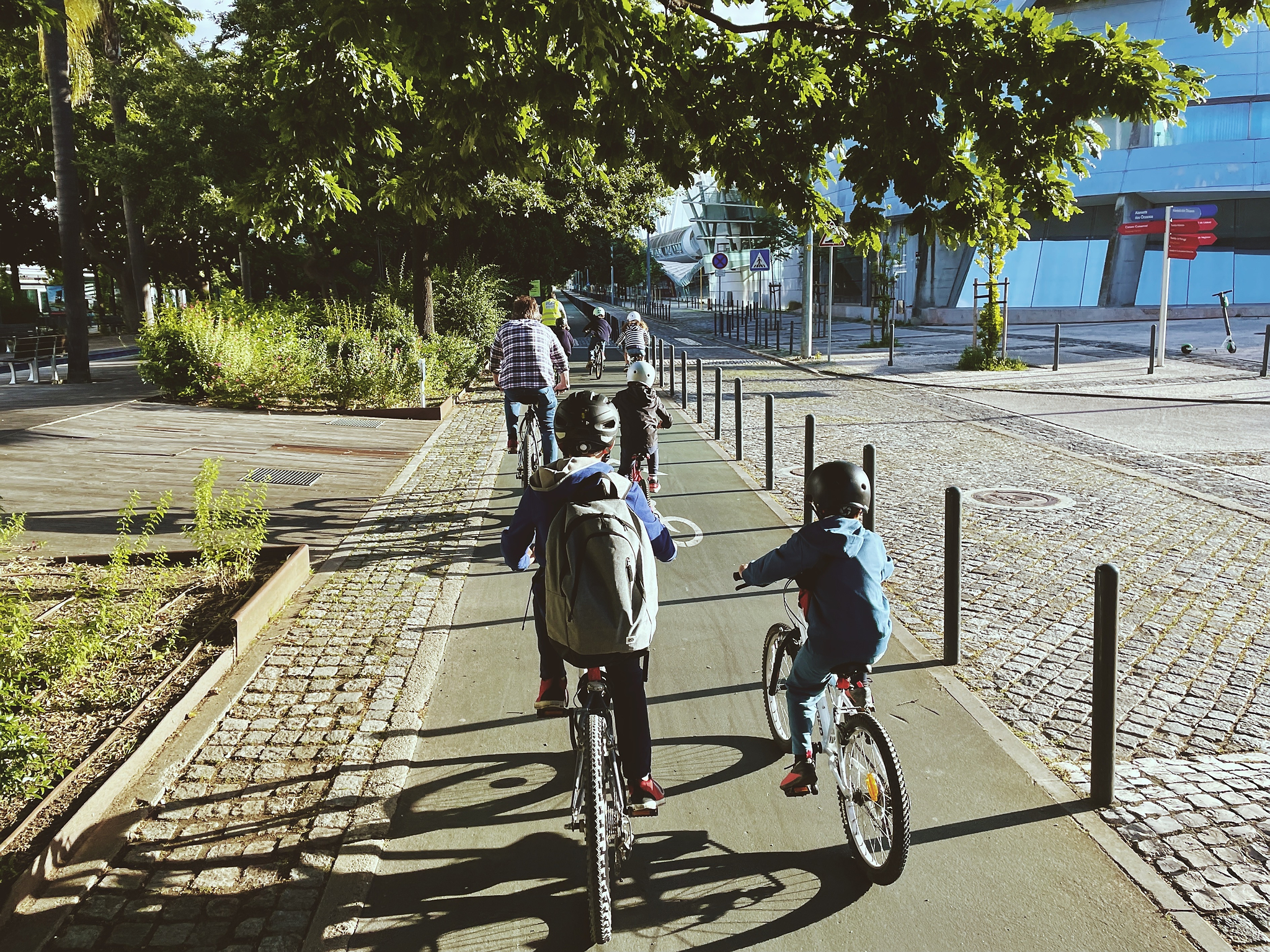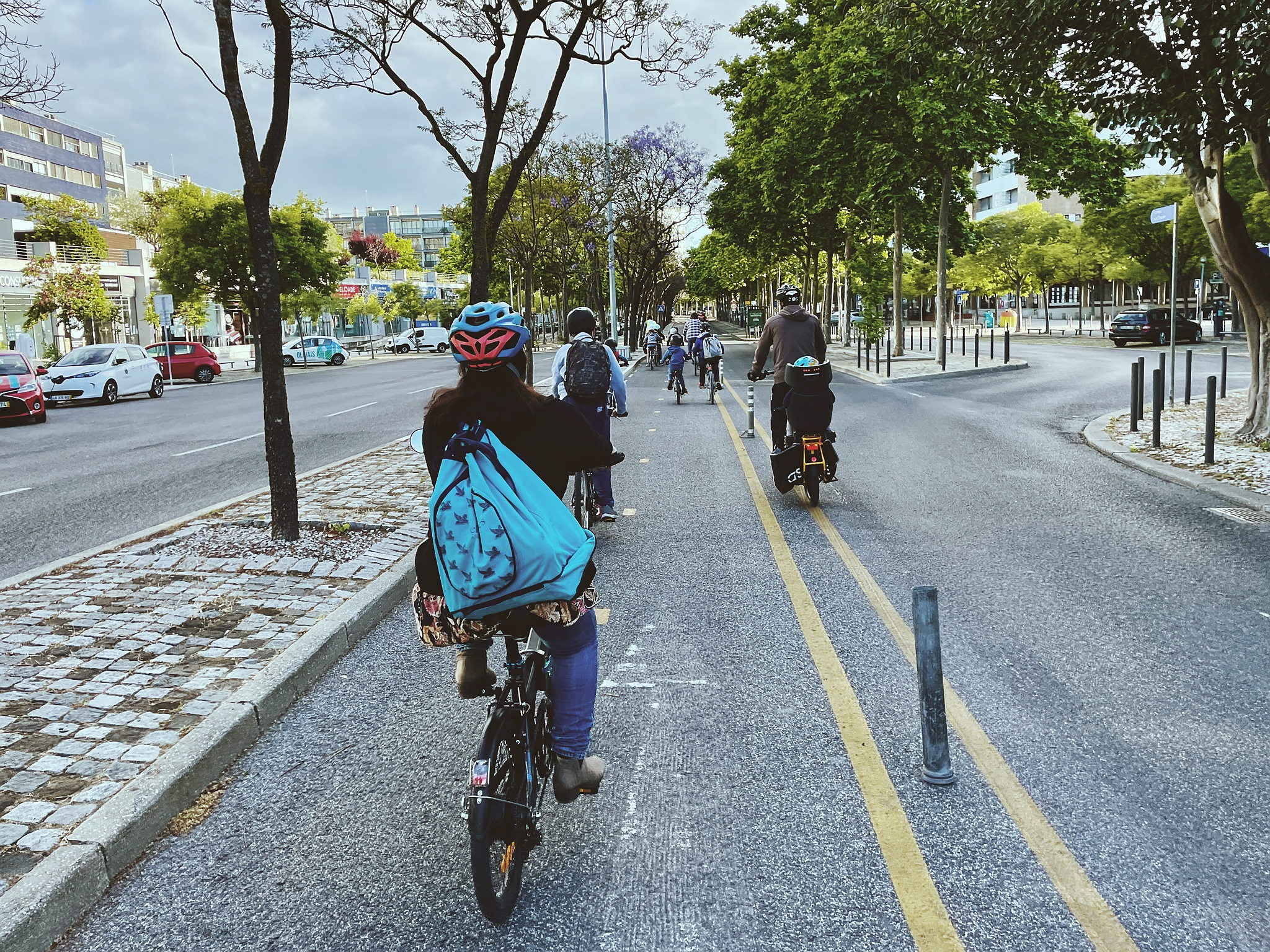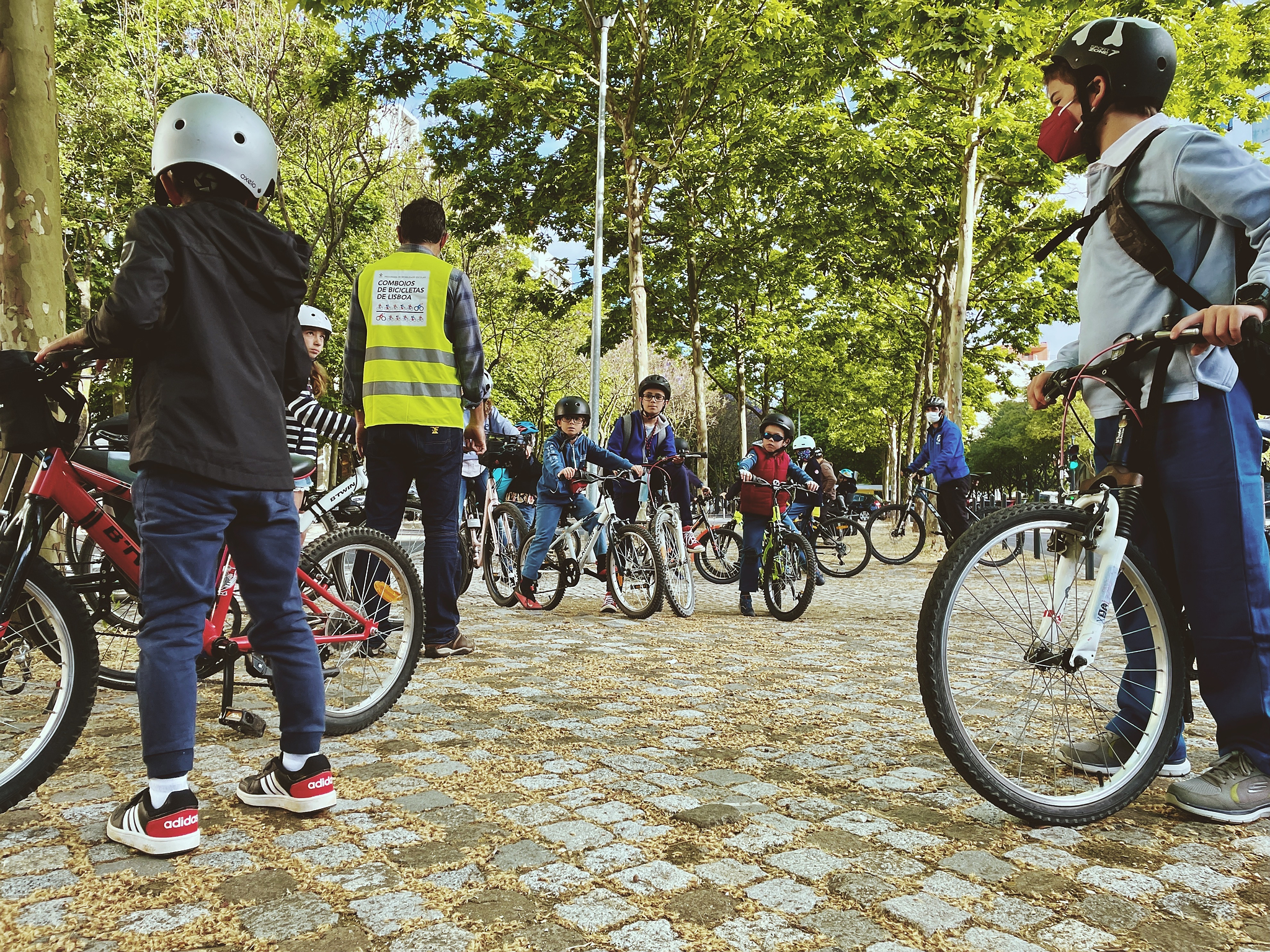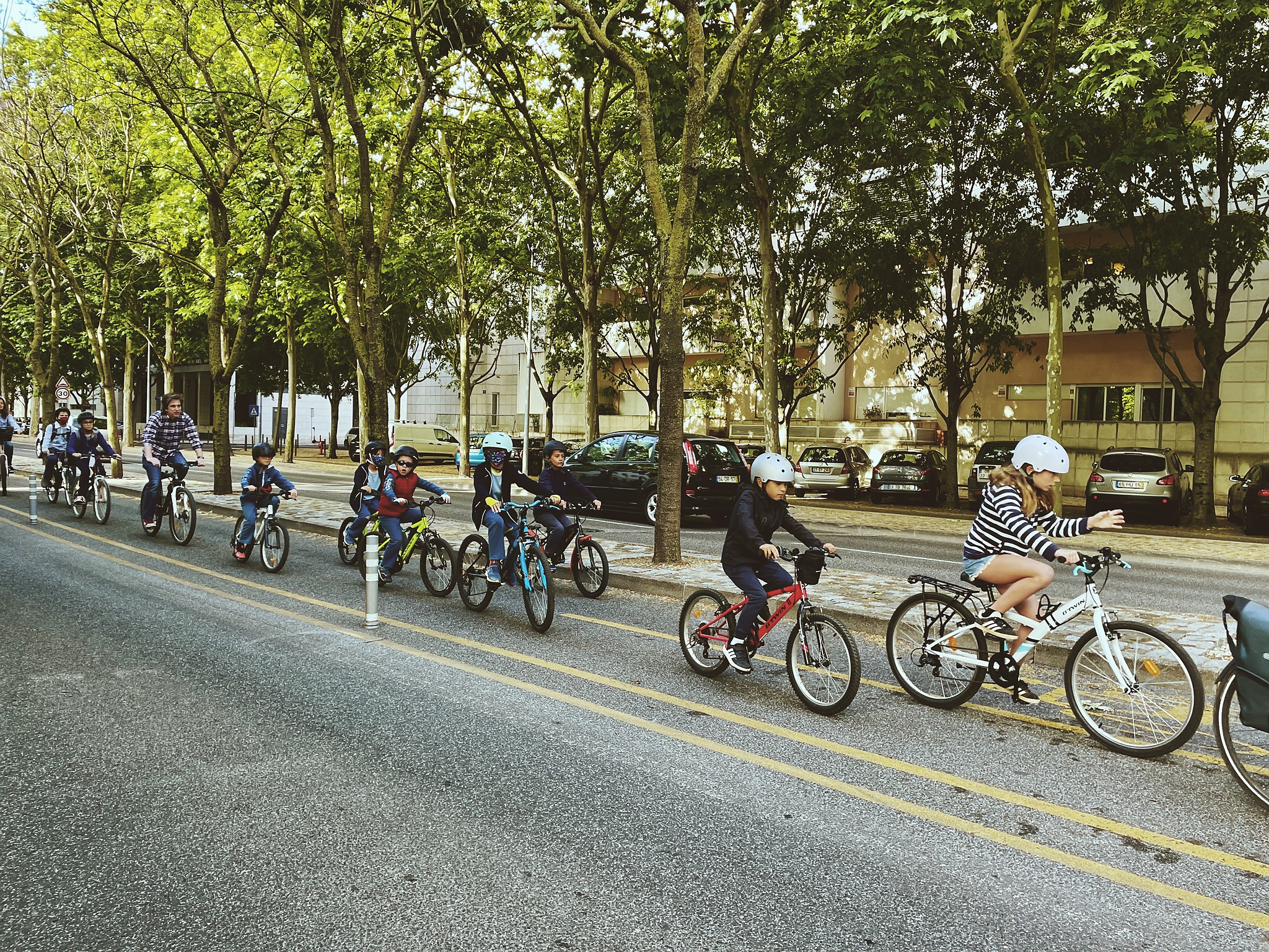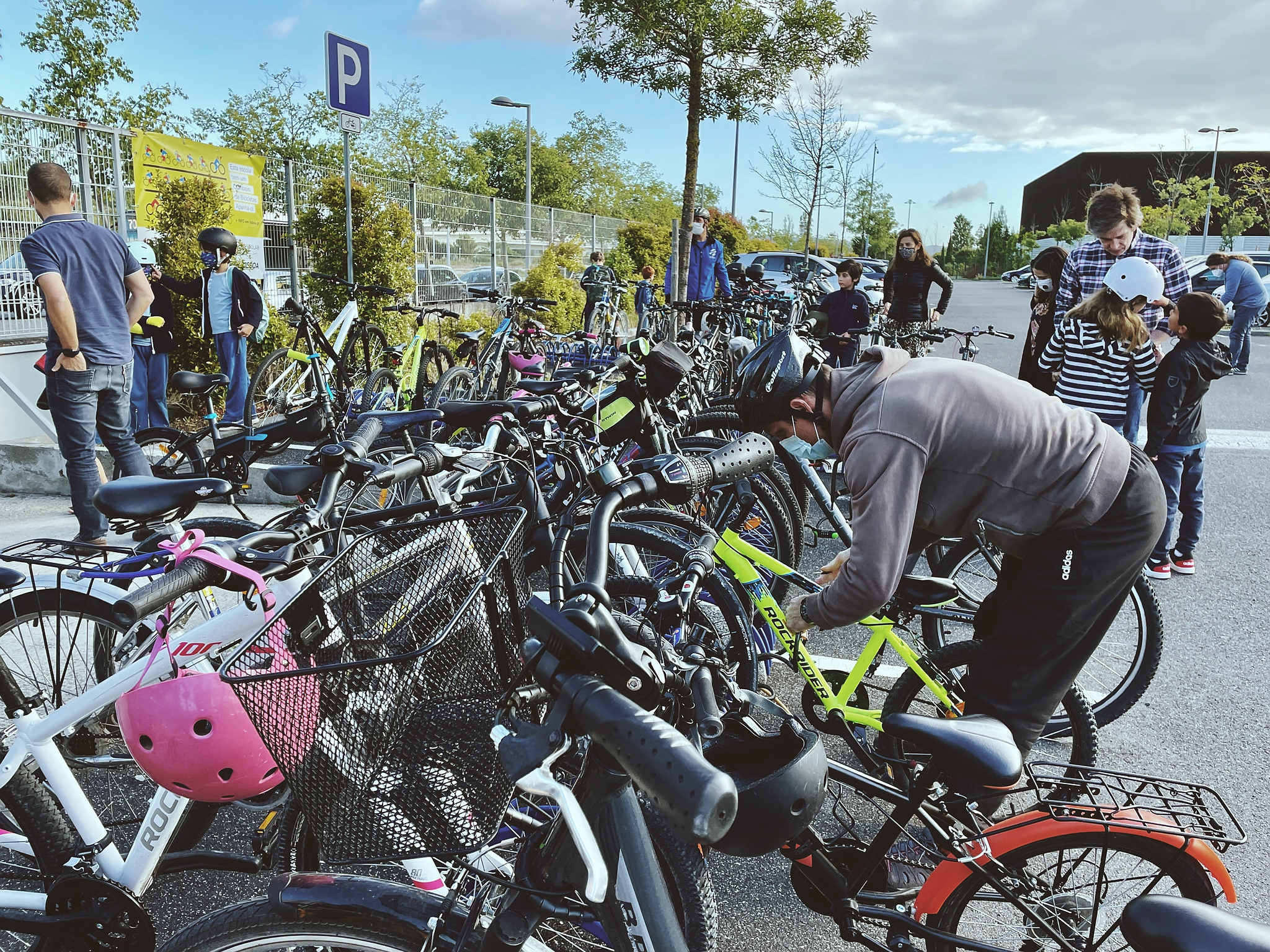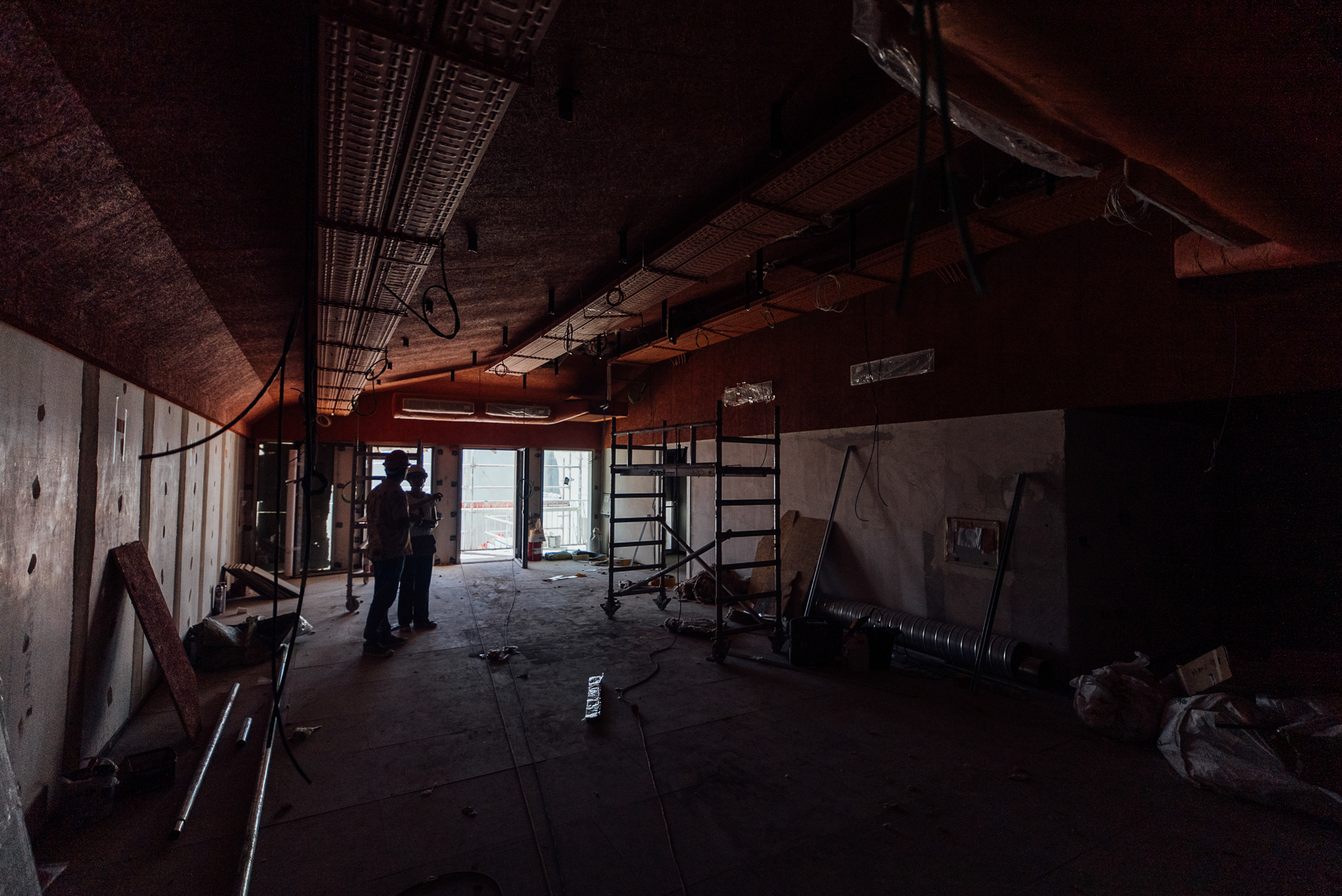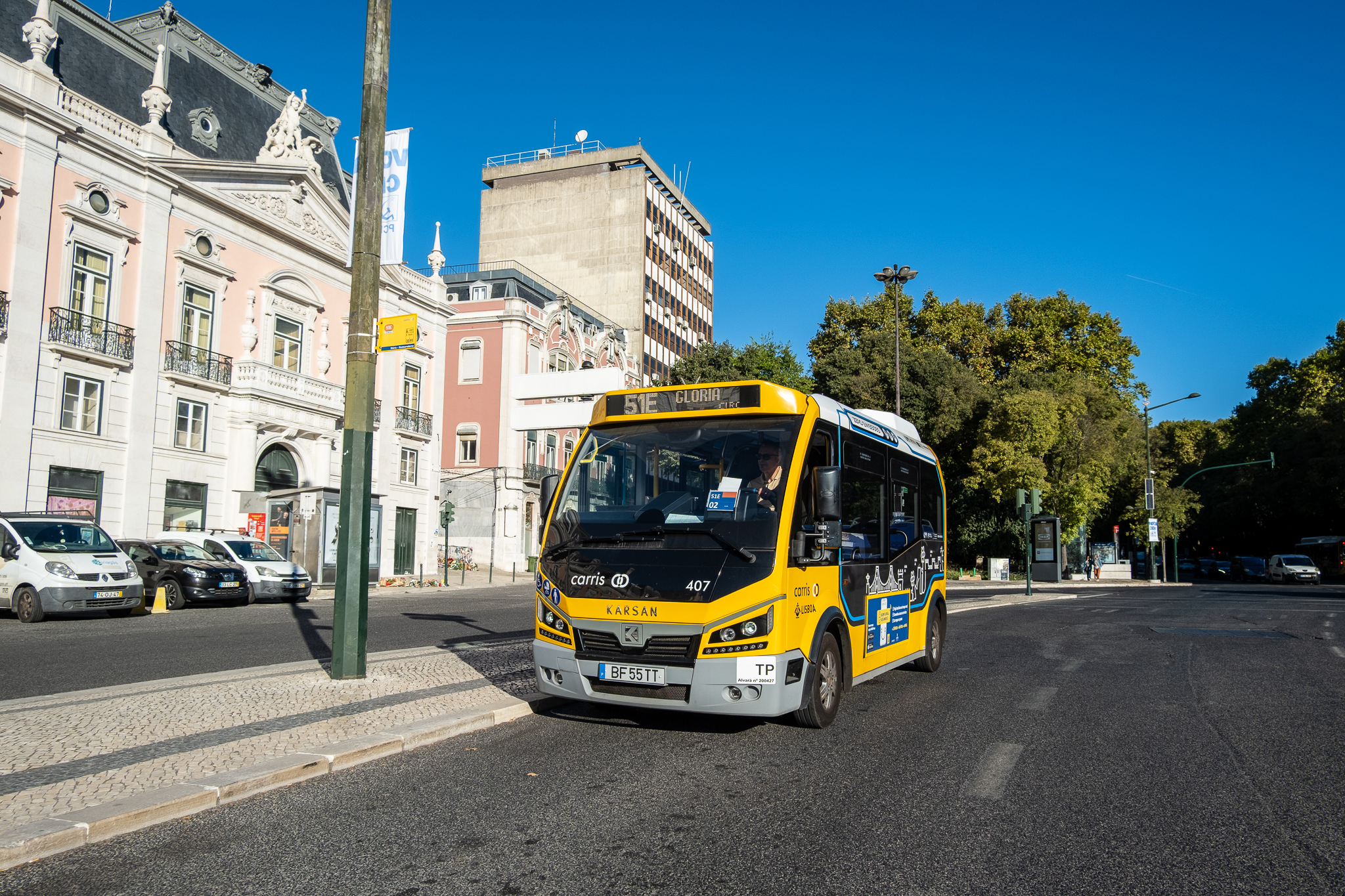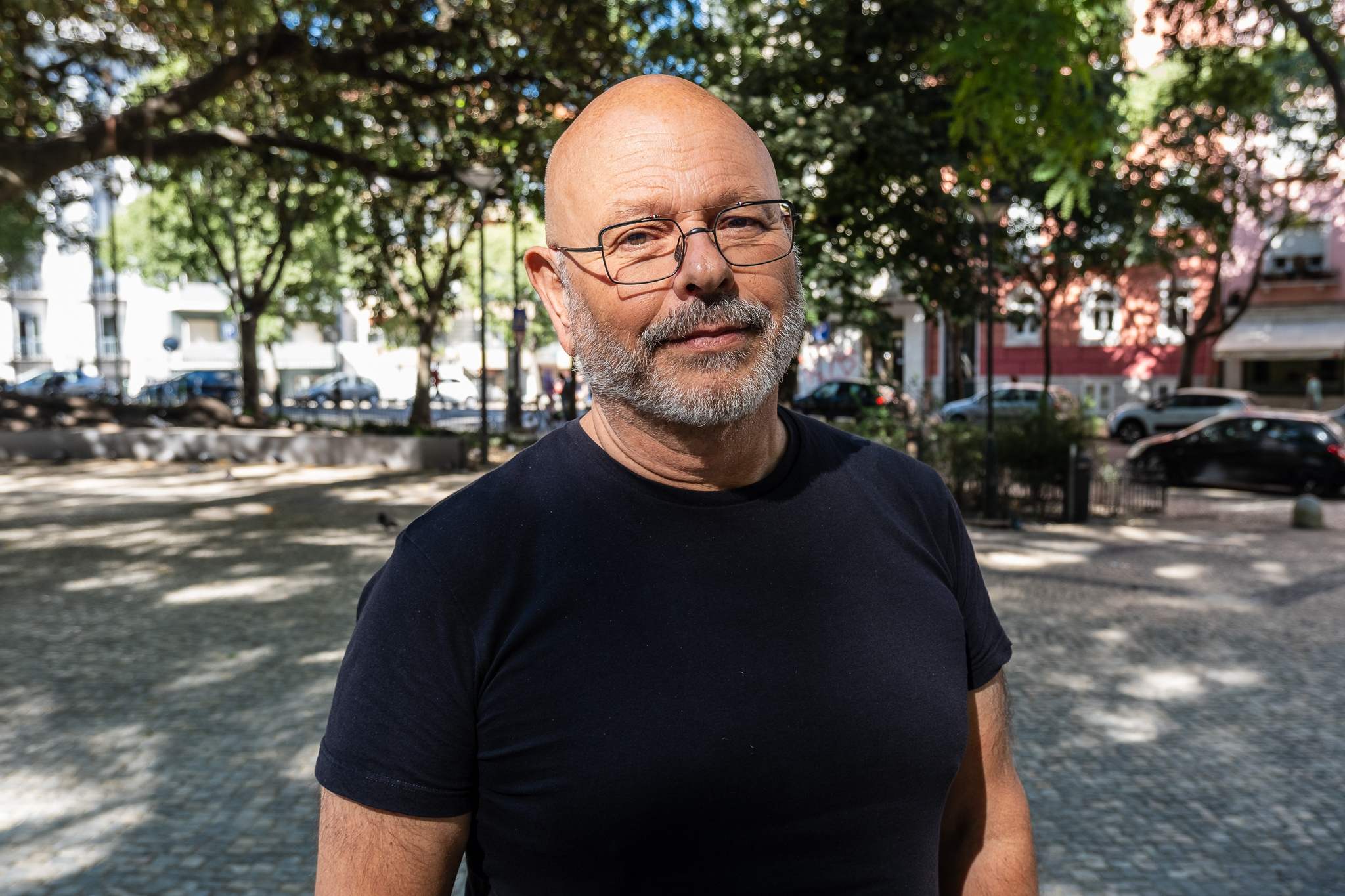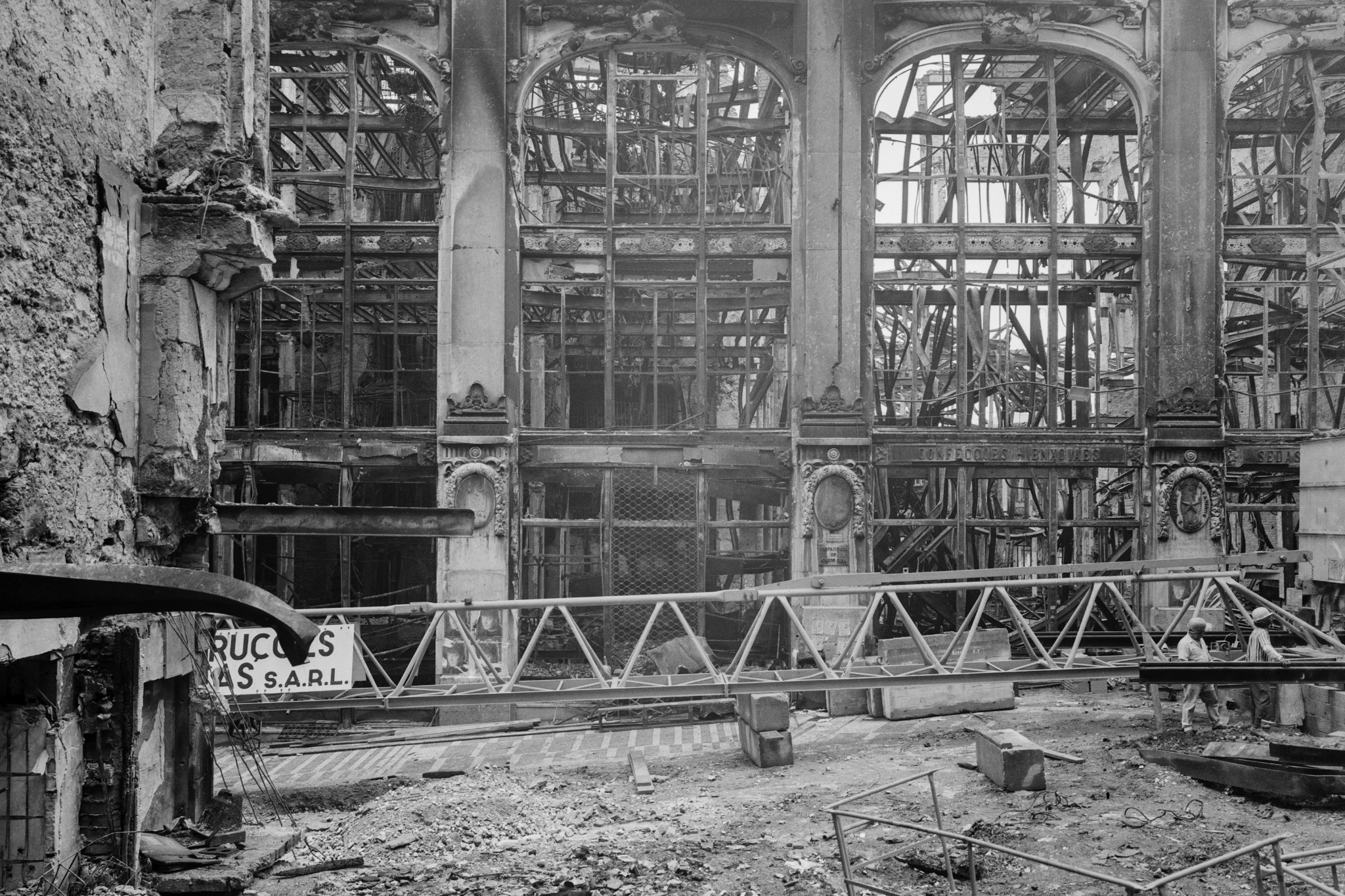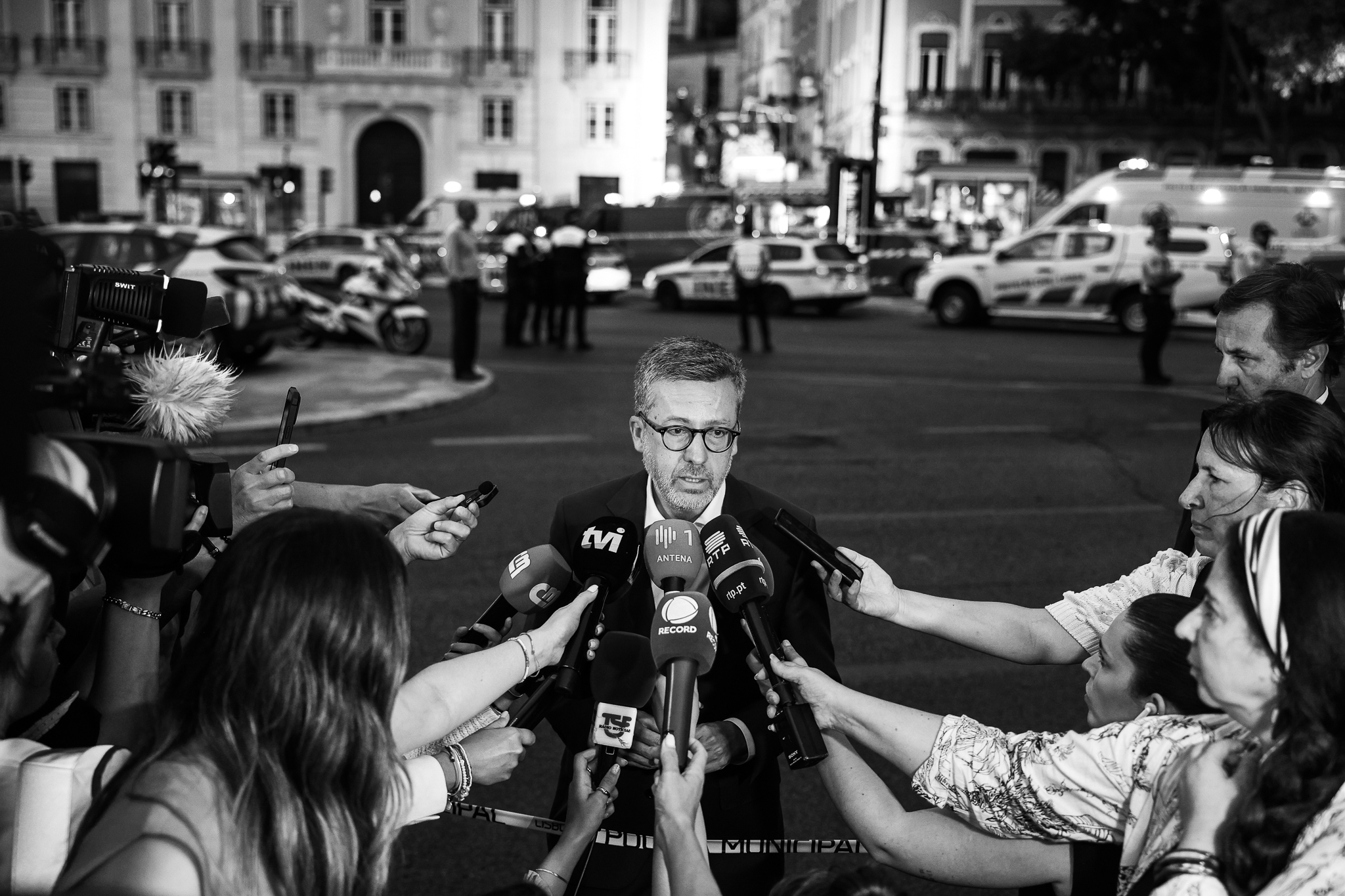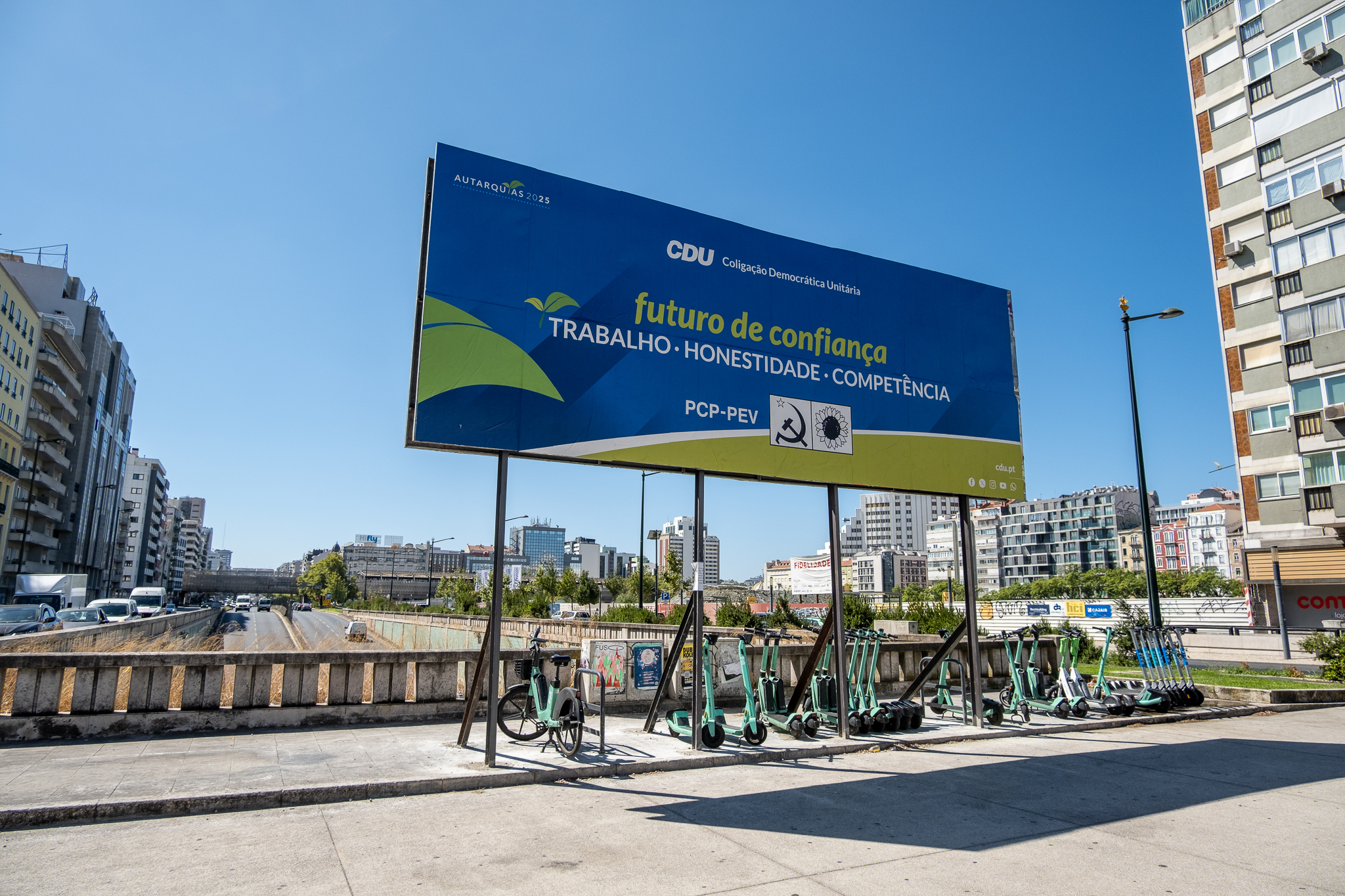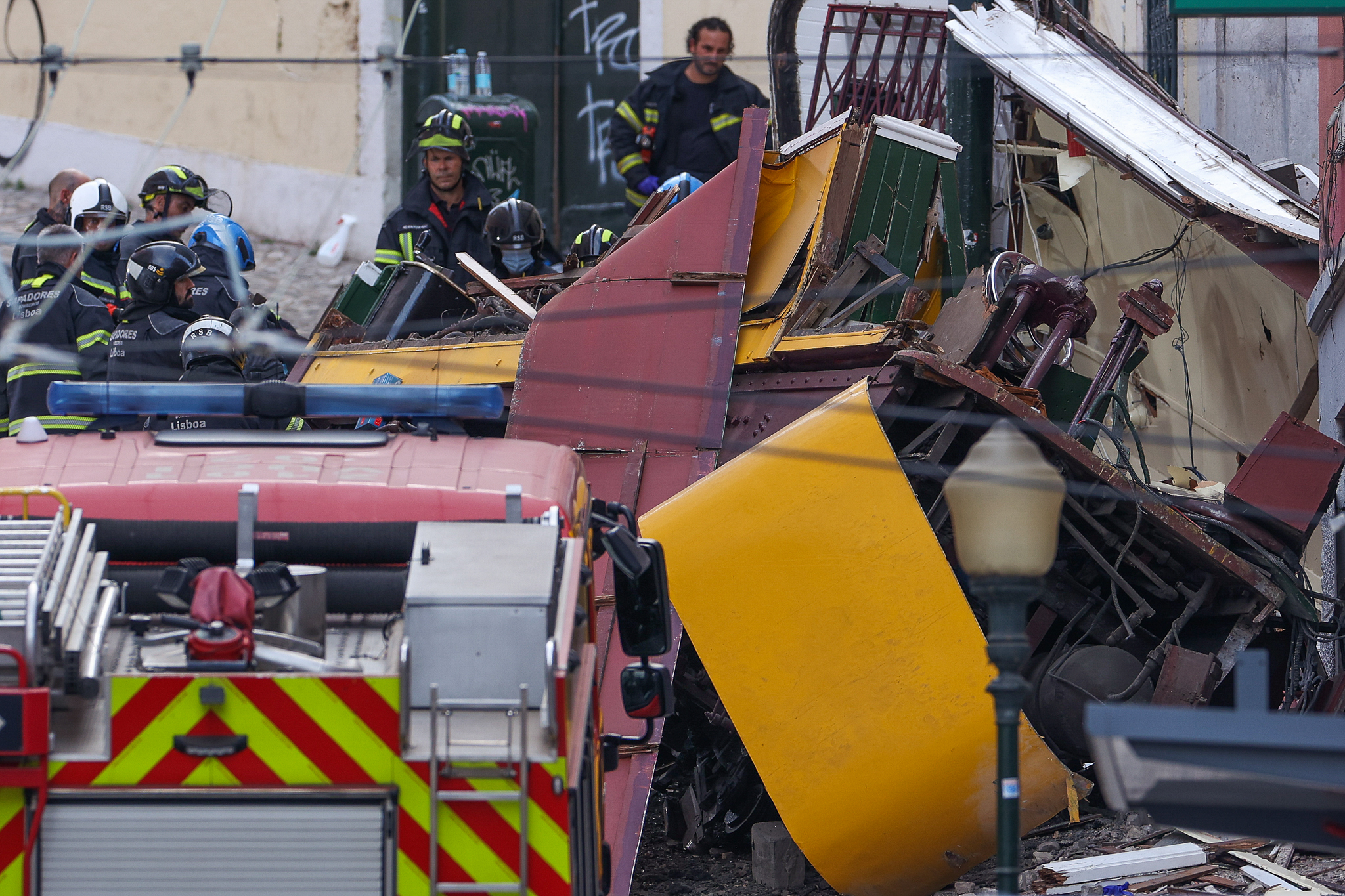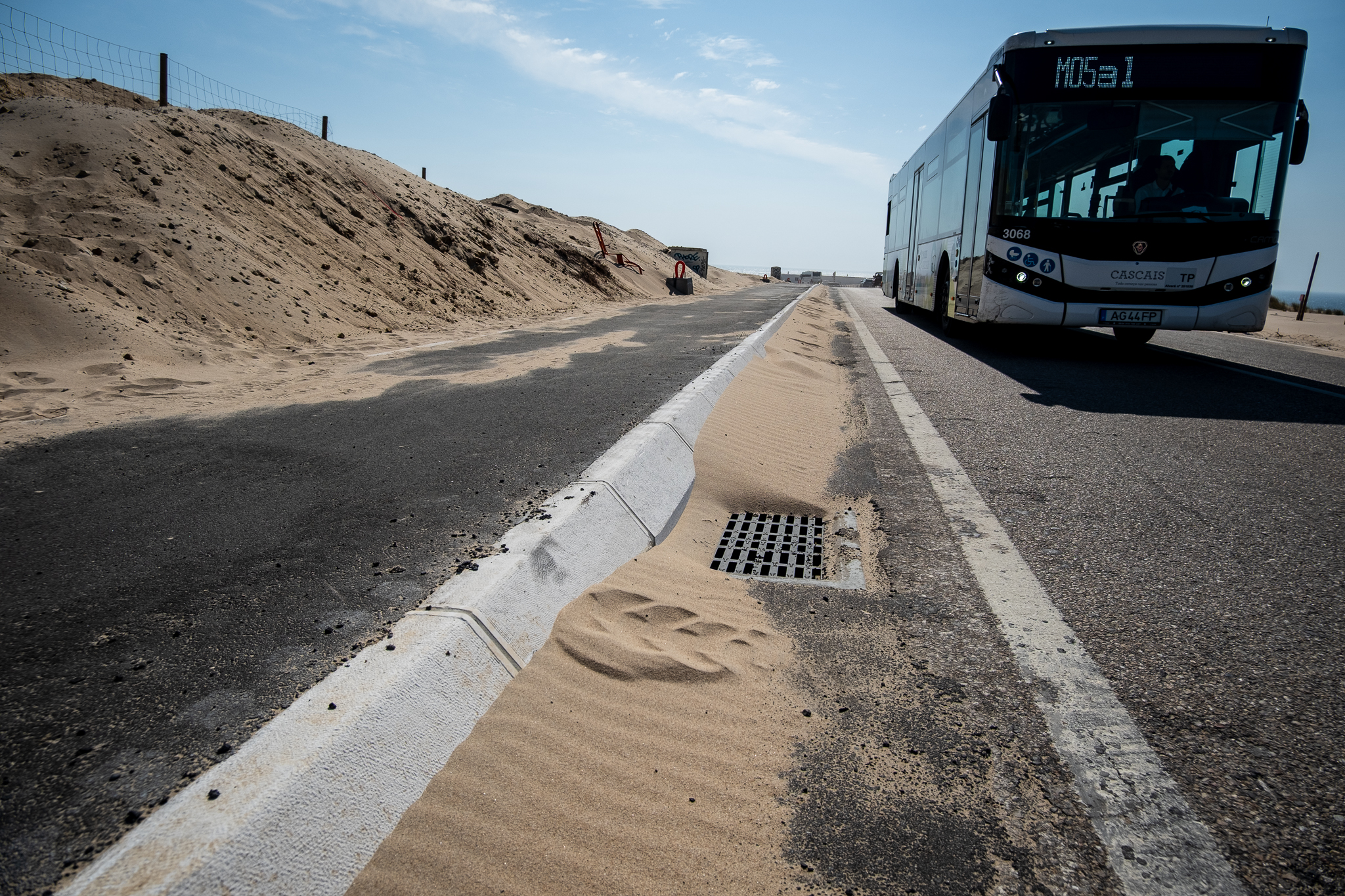
Gonçalo Peres starts alone, it's 7:40 a.m., at the south end of Alameda dos Oceanos, in Parque das Nações. He knows he'll be picking up at least 12 children along the way - they're the ones who signed up for the train that day, via a WhatsApp group where mothers and fathers arrange each trip. But Gonçalo never knows if there will be a last-minute addition or a parent or guardian who also wants to hitch a ride on the train. Always keeping an eye on the WhatsApp group, he continues along Alameda dos Oceanos, the most direct route, always on a cycle path.
Gonçalo Peres is one of the monitors who helps run the Bicycle Train at the Pedro Arrupe School, even though he doesn't have any children there. The train is guaranteed to leave every Tuesday. This week, exceptionally, the other train that also runs on Fridays, to EB Parque das Nações, left with João Bernardino from the northern end of the neighborhood. The two trains crossed paths halfway through. The meeting took place on the north side of Alameda dos Oceanos: Gonçalo went in one direction, João in the other. Behind them were several children.
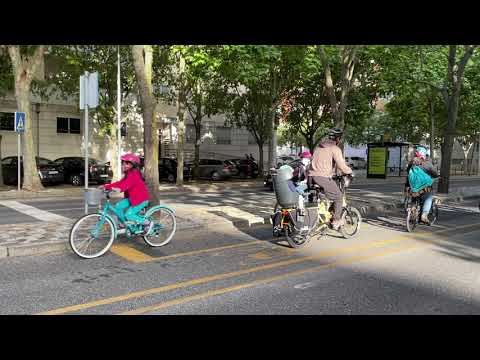
John is a kind of "father" of this idea. The first train, at the time called CicloExpresso do Oriente, left in 2015This inspired a similar initiative in Aveiro. But last year Lisbon City Council decided to sponsor the idea and scale it up across the city. More than a hundred students cycle to school at least once a week and there are already trains in 10 school districts.
The frequency of the trains is not daily because their operation depends on the human resources available. Lisbon City Council has established a contract with the Bicicultura cooperative, an organization dedicated to promoting cycling, to provide monitors for the trains and, more recently, has started training some parents and employees of Parish Councils to monitor the growth of the trains, the lines on which they run and the children transported.
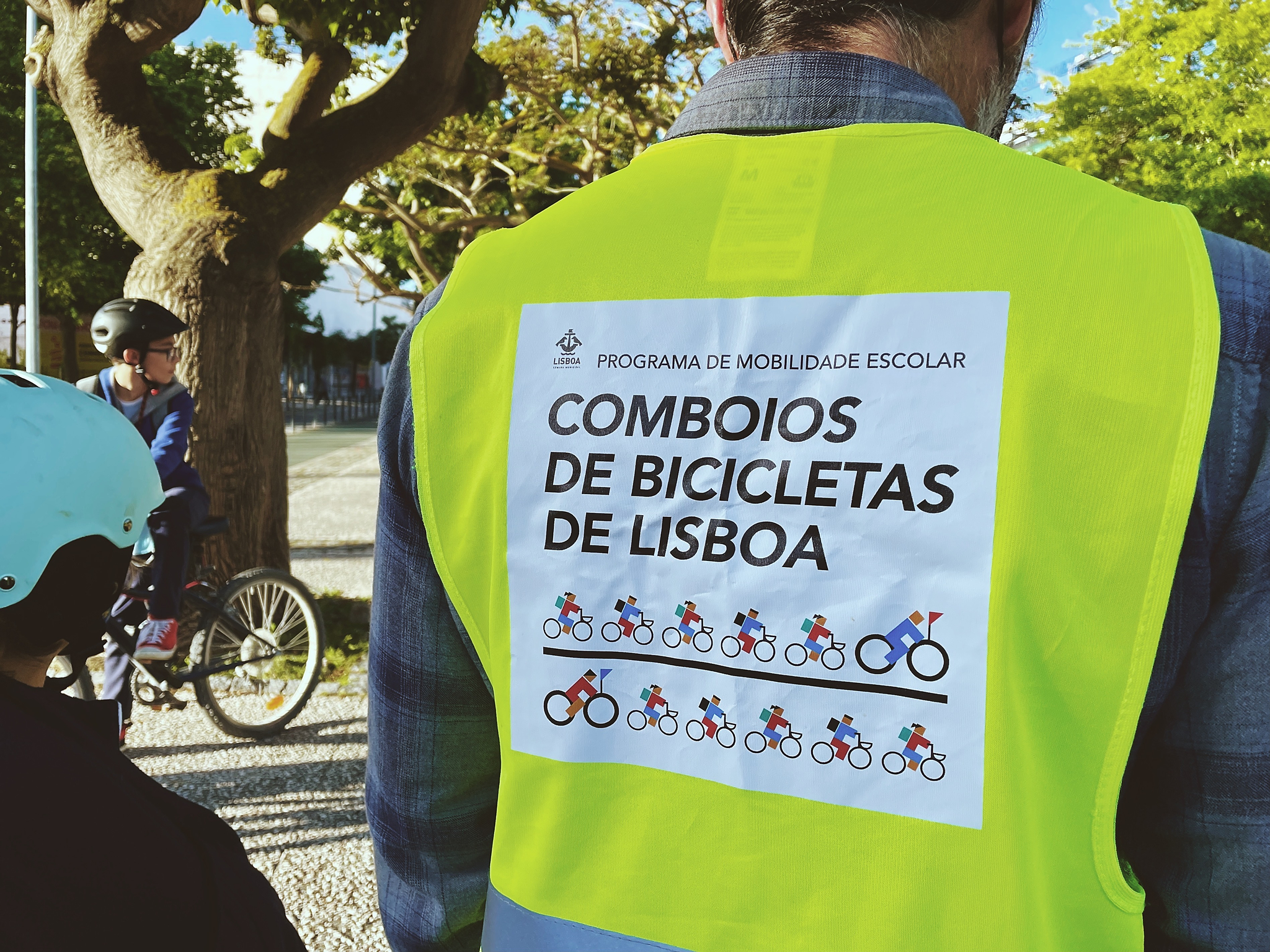
Back to the Pedro Arupe School train. As Gonçalo continued along the route, more children joined in. Parents left their children as if they were going to take them to the bus; some decided to go with them, on their own bicycle or carrying them in a seat behind. There were two children who took the train for the first time. Gonçalo explained the rules to them straight away, which are simple: follow in line on the road and bidirectional cycle paths, don't overtake the first monitor on the train that runs alongside or in front of the children, at junctions follow the monitors' instructions, respect pedestrians at crosswalks and have fun.
On arrival at any intersection, such as a crossroads or a traffic circle, there are always reminders for the little ones to pay extra attention; Gonçalo would lead the way and the children would line up in single file; behind them, another volunteer would make sure no one got lost. The rule is one monitor for every four children: the assistant Gonçalo was Tiago, from the Parque das Nações Parish Council, who usually accompanies this initiative. The two of them had the support of the other fathers and mothers who were also taking the train.
On arrival at Colégio Pedro Arupe, the scene was bleak: cars and SUVs queuing upwhile they were trying to get into the school's indoor parking lot to drop off their children. Each car usually had two passengers. The traffic generated there, which a school official was trying to coordinate, was delaying several buses. Some of the more impatient families parked in a small pedestrian square. The children who entered on foot, who arrived by bicycle or those who were already at the school, were forced to live with the pollution that was generated there, for their sensitive and still developing noses.
Even so, it wasn't all bad news. The GIRA station with a dozen docks right in front of the school was full within minutes and many students, especially older ones, were arriving on their own bikes. There is ample parking at the school for those who choose to cycle. There were several bicycles parked there, some belonging to adults, perhaps a teacher or a member of staff.
Returning home is more complicated. The students' departure times don't coincide, but both Gonçalo and Tiago from the Junta de Freguesia say that ways of solving this need are being studied. For now, returns are made informally by children, fathers and mothers who form groups that suit their schedules.
In addition to the trains at Colégio Pedro Arupe and EB Parque das Nações, there are seven more in Lisbon, most of them in the area between Parque das Nações and Olivais. There's a train in Telheiras, one in Restelo, another in Areeiro and one in Arroios. And more children are joining each train, because the fears that mothers and fathers may have are disappearing. Gonçalo and Tiago are convinced that the success of these Bicycle Trains depends a lot on word of mouth and also on the critical mass that each train represents. After all, the larger the group of pupils cycling to and from school, the greater the impact this will have on the children who see the city every day through their car windows and breathe in the air conditioning, and on their mothers and fathers.
Article updated at 11:00 on 19/05/2021 and at 16:00 on 28/05/2021 with some corrections.
